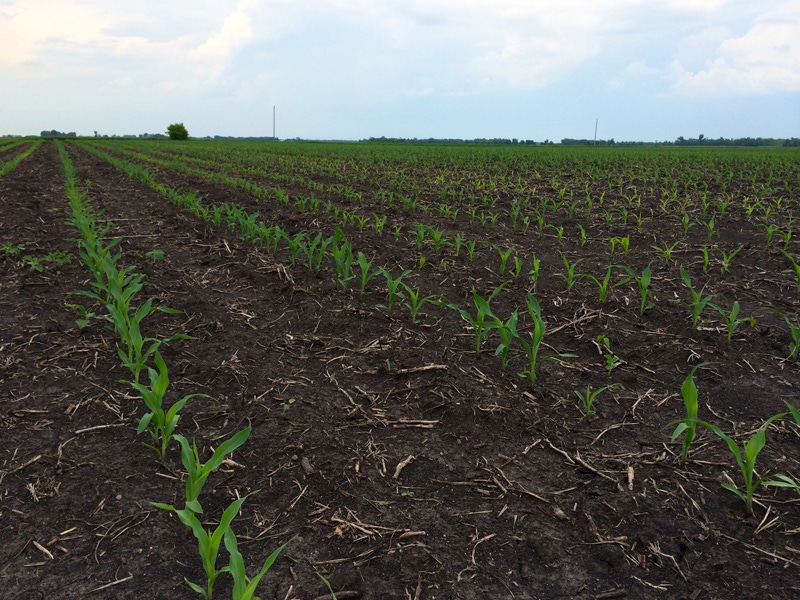May 9, 2017

A Little Drier, But Not Yet Warm | The Bulletin: Pest Management and Crop Development Information for Illinois
Very little corn or soybean planting took place in Illinois over the past week, and while planting progress is not far behind average for the end of the first week of May, crop development is starting to lag as temperatures remain cool. Crop emergence has been slow, with only less than half of the corn crop that was planted by the end of April emerged by May 7.
One of the most visible consequences of the cool weather has been the poor corn crop color of recent days. Night temperatures in the 30s and low 40s cause physiological damage in young leaves, and such leaves can’t absorb light properly, so bright sunlight causes loss of color. In most cases, the sickly, yellowish leaf color is fairly uniform across the field, which indicates that it’s low-temperature damage rather than frost, which tends to be unevenly distributed. These symptoms should improve once air temperatures return to normal, but much of the green color may have to come from newly-emerged leaf area rather than repair of older leaves.
The cool temperatures also mean slow drying of the soil. This is delaying the improvement of soil conditions where the crop has been planted, and is also delaying planting, including replanting. In areas that received 5 or more inches of rain between April 26 and May 4, ponding was extensive, and seeds that spent more than a day or two under water did not survive.
Replanting will be widespread, and the first decision in many fields will be whether to replant the entire field or only the ponds after they dry up. Repair-planting – dropping the planter in to replant the most-damaged areas – has gotten more difficult to manage as planters have gotten larger; when only three or four rows are damaged, 24 rows may need to be planted. This also brings the complication of ending up with too many plants in much of the field. If replant seed cost is low, then destroying the existing stand and replanting the whole field might be the preferred option.
It will take patience to wait until soils are dry enough to get back into the fields, either to replant or to plant the first time. It’s more accurate to think of planting delays in terms of growing degree days than in terms of calendar days; in other words, planting delays are less sever when the weather is cool. Once it does warm up (and history says it always does), drying rates will increase and planting will resume.
Even though it will be difficult to wait, remember that planting into wet soils can mean compromised soil conditions, and depending on the weather, this can turn into a season-long problem. The longer-term forecast (accuracy unknown) is for a return to warmer, drier conditions soon, and we can still be optimistic that 2017 will turn into a good season.
Originally posted by the University of Illinois.
You May Also Like




